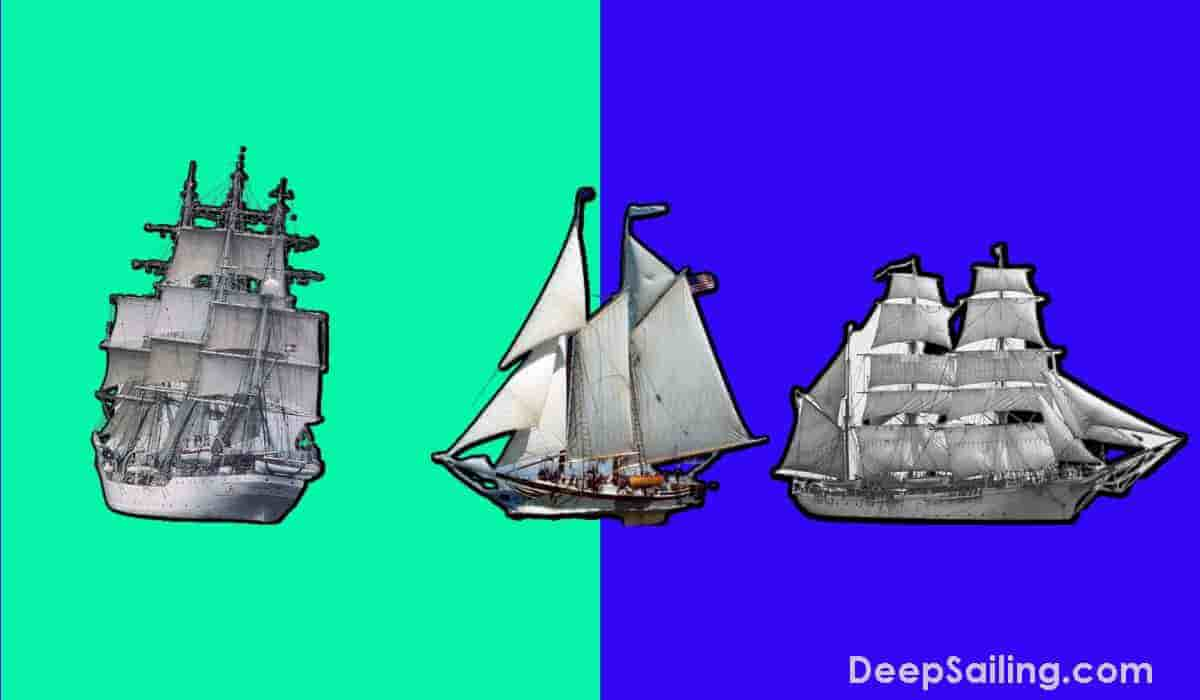
The 15 types of sailing ships are listed below.
- The Schooner
- The Carrack
- The Brigantine
- The Barquentine
- The Xebec
- The Barque
- The Clipper
- The Windjammer
- The Fluyt
- The Fully Rigged Ship
- The Cutter
- The Yawl
- The Brig
- The Ketch
- The Hulk
Throughout centuries, there have been many different types of sailing ships seen from harbors and coastlines around the world.
This article will show the various types of sailing vessels that have made their mark in maritime history and we showcase their purposes and why they are still remarkable feats of marine engineering.
The different sizes, shapes, and masts of the ships required different numbers of sailors to handle them and each type of ship was crafted with a different purpose in mind.
All ships are unique with no two types of ships being the same with each coming with its own experiences, features and requirements.
1. The Schooner
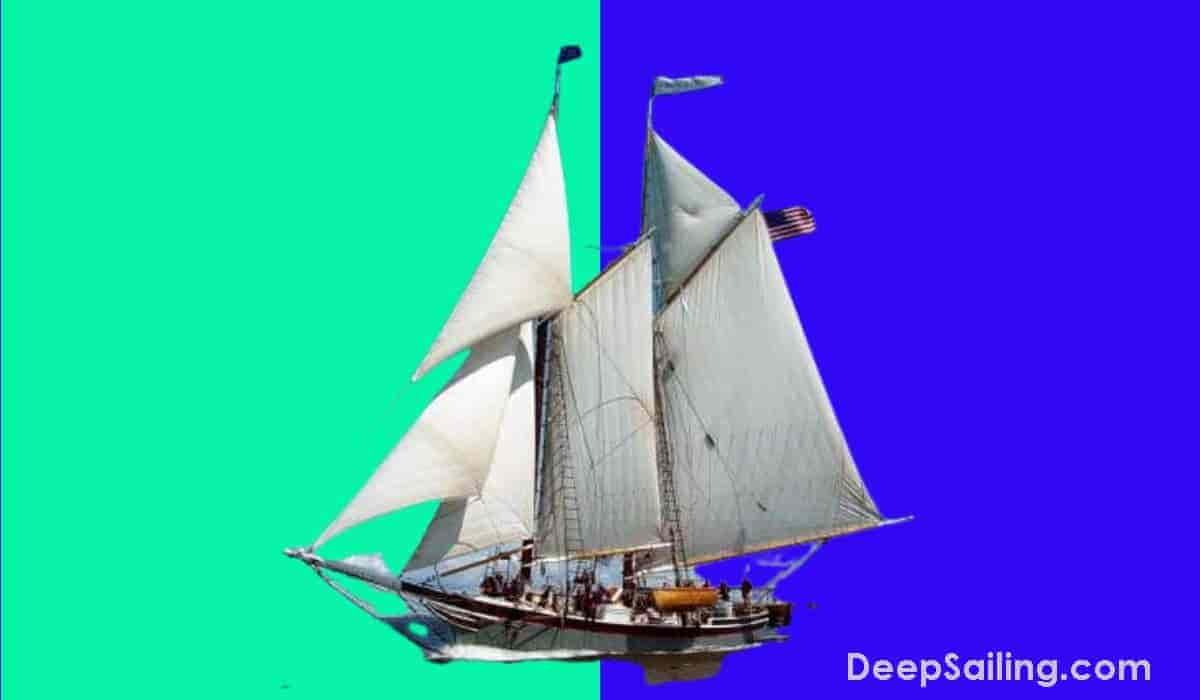
The Schooner sailing vessel, with an average size of 46m (152 feet) in length, was developed in the early 17th century and first used by the Dutch.
The ship came with fore and aft sails and they were created to operate in the toughest of wind and ocean conditions.
The Schooner was a multi-purpose sailing vessel used for transporting slaves to transporting cargo and it was used for fishing and racing too.
There are 5 different schooner types that are characterized by their rig configurations listed below.
- Tern schooner: This was a 3-masted schooner most popular between 1880 and 1920 capable of carrying up to 400 tons in cargo and it required a crew of 6-8 people
- 4-6 masts schooner: These schooners spread the sail area over smaller sails
- Grand Bank Fishing schooner: Similar to the famous Bluenose, it carries the main gaff topsail and a fisherman's staysail set between the masts.
- Square Topsail schooner: This was a combination of fore and aft sails and small square sails, most popularly used for coastal cargo transportation in the 1800s
- Coastal schooner: This was a coastal schooner sailing ship used for carrying goods and general cargo to nearby islands along the coast (1)
The 19th Century schooner came with two or three masts, the one at the fore being shorter than the others.
Modern schooners, with Bermuda rigged sails, remain powerful, economical coastal liners traversing the Pacific.
Famous schooner sailing ships are listed below.
- America: The Schooner named "America" was designed for racing and it became the first winner of the America's Cup international sailing trophy (2)
- Thomas W Lawson: The schooner “Thomas W Lawson” had a unique seven masts, with interchangeable sails and gear
- Wawona: The schooner "Wawona" was one of the largest lumber carriers and fishing vessels between 1897 and 1947
2. The Carrack
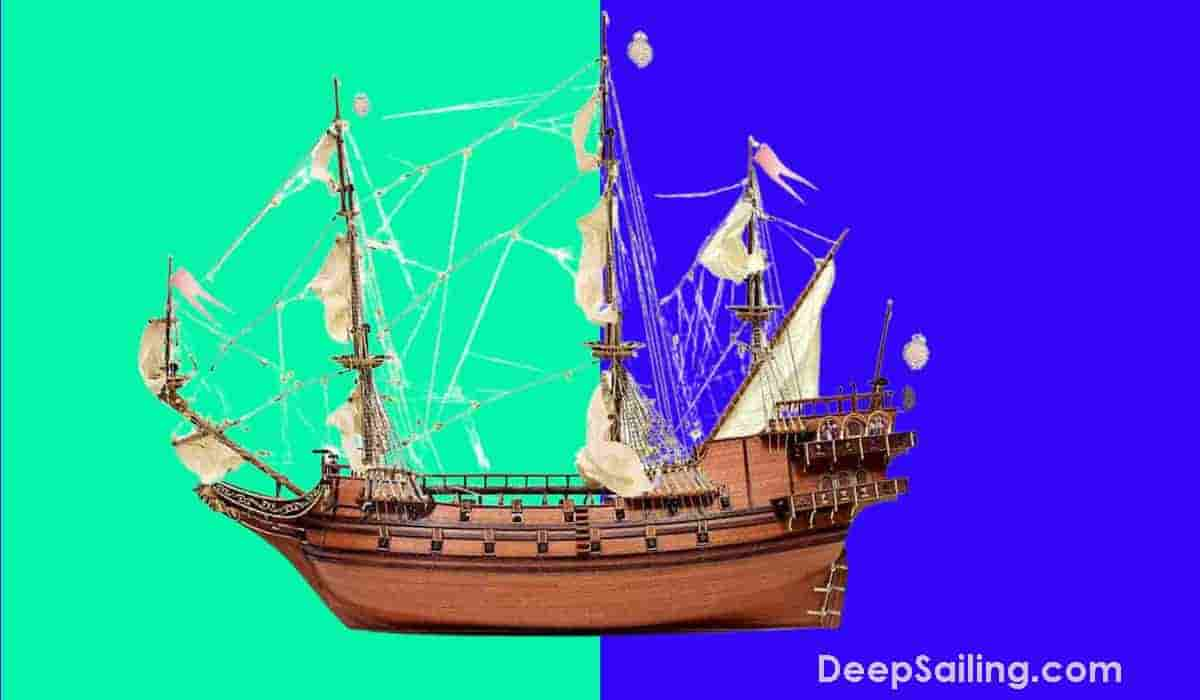
The Carrack, developed in the 14th and 15th centuries with the first built in Portugal, is a nautically-rigged wooden ship with three or four masts each having square sails or triangular sails and it was heavily used between the 14th to 15th Centuries and remained popular until the 18th Century. It is the sailing ship Christopher Columbus used to sail the world.
It was the largest ship in Europe with the Spanish Carrack being more than 1,000 tons in weight and 150 feet (45 meters) in length. More modern versions of the Carrack were developed by the Portuguese and they could hold up to 2,000 tons. (3).
The Carrack had 4 decks with the lower 2 used for cargo, the 3rd was for accommodation and the 4th was for cargo owned by the crew (4) and this bulky ship was the standard trading ship along the Baltic, Mediterranean, Asian, and Atlantic coasts in the mid-16th century useful for carrying cargo across seas.
The Carrack had a strange shape which made it cumbersome to sail close to the wind and after a lot of engineering experiments, parts of the ship were stripped off giving the ship a high stern and a low bow.
The modern Carrack features a square-rigged mainmast, foremast, and a latten-rigged Mizzen mast, along with a rounded stern, sizable bowsprit, forecastle, and aft castle.
This is a large ship, built to carry heavy freight for long-distance hauls since it was very steady even in the worst weather with the British Army calling it the “Great Ship” because of its highly-functional ship design.
Famous carrack shipping vessels are listed below.
- Santa Maria: This was the famous ship that Christopher Columbus used to sail and discover America in 1492
- Victoria: The first ship to circumnavigate the globe
- Grace Dieu: This was commissioned by King Henry V and it was one of the largest carrack ships in the world in 1418
- Cinco Chagas: This was presumed to be the richest ship at that time. it was sunk in battle in 1594 (5)
3. The Brigantine
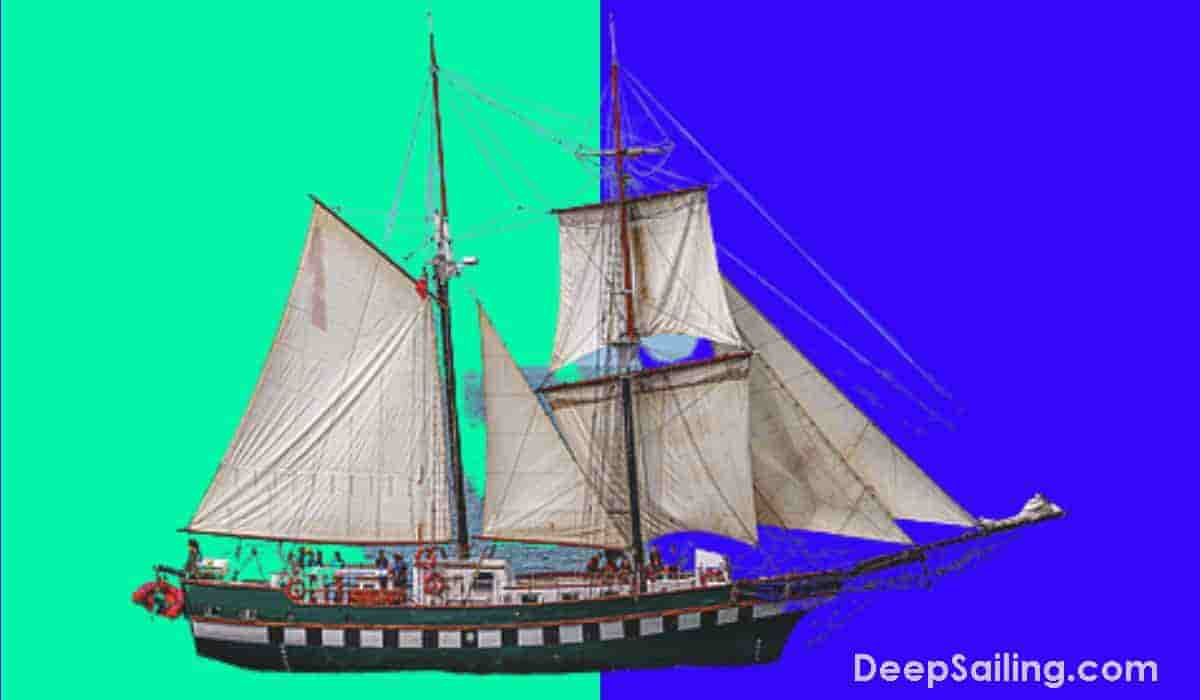
A Brigantine is a two-masted sailing ship with the main mast both a fore-and-aft main sail, a triangular type of sail and a square main topsail that came in various sizes ranging from 30 tons to 150 tons and it could carry a crew of up to 125 people but the shipping vessel could still be handled by a smaller crew if needed.
These ships were similar to the sailing vessel called the Brig as they both had top-gallant sails and were used by the Royal Navy to scout and monitor enemies on the high seas while also being popular amongst pirates as they were faster and easily maneuverable sailing vessels.
It is unclear when the ship was originally built with loose definitions date the ship back to the 13th century when it was originally referred to as the "sail and oar-driven war vessel" (6) and early academic definitions where the vessel was referred to as the "Brigantine" was first seen in books in the early to mid-16th century (7).
They would sail across the trade routes of the Baltics and Northern Europe, all the way from Germany to Scandinavia.
The mid-size ships had two sails on the-mainmast with a stripped-down fully-squared rig.
4. The Barquentine
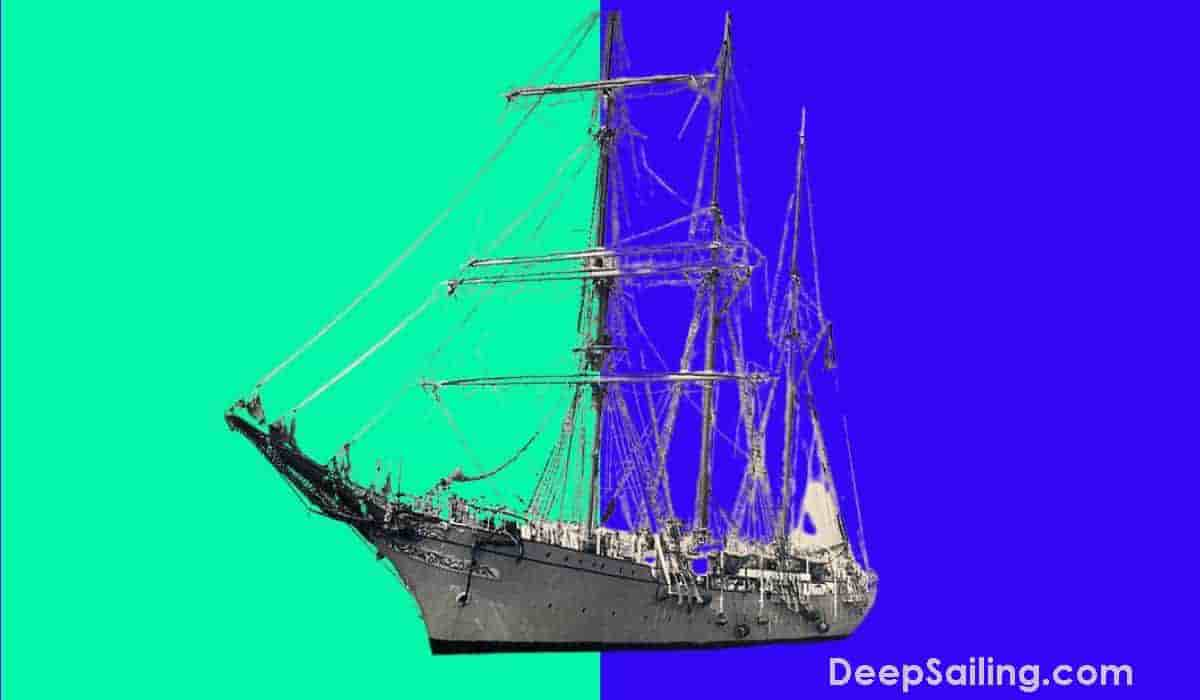
The Barquentine, first built in the 17th century and also referred to as a "schooner barque", "barkentine" or "schooner bark", is a sailing ship similar to a barque but with only the foremast square-rigged and the remaining masts rigged fore and aft (9). They weighed 250 to 500 tons.
The Barquentine has three or more masts and square sails on the fore and aft masts with the main mast had topmast and gaff sails and these had been stripped down to facilitate operation by a slimmer crew and basic rig.
The Barquentine sailed the waters of Northern Europe which were dominated by variable wind speeds and they were popularly used to carry lumber from Scandinavia and Germany to England and the Baltic Areas.
5. The Xebec
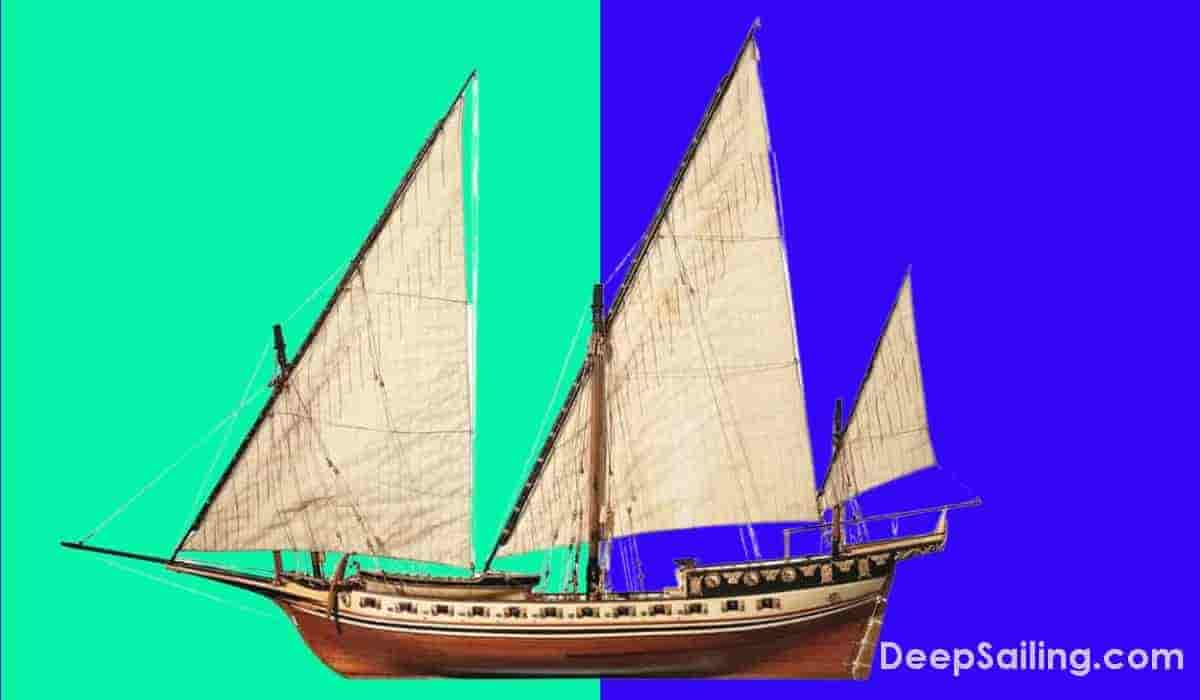
The Xebec, also known as "Zebec", a name derived from the Arabic word for "Small Ship", was a sailing ship built in the 16th to mid-19th century that was used mainly for moving cargo.
The Xebec sailing vessel held between 90 and 400 crew and was 103ft 9 inches in length with a tonnage of between 200 - 300 tons (10) and they were very agile and popular with European navies.
The features of the Xebec are listed below.
- Long-prow bulkheads
- Narrow elongated hulls
- Huge lateen yards
- One aft-set mizzen mast
- 3 lateen-pillared masts, both raked forward and having a single triangular sail
Their shallow draft and lateen rig allowed for a closer pinch to the wind allowing them to flee quickly or turn around and fire a broadside volley quickly.
After a lot of engineering experiments, the Xebec gave rise to the Polacre-Xebec, which replaced the mizzen mast. The mainmast of the new derivative also had a square rig and these new vessels were light and could not carry a heavy load with the shallow draft and low free-board making them unsuitable for open-seas sailing.
6. The Barque
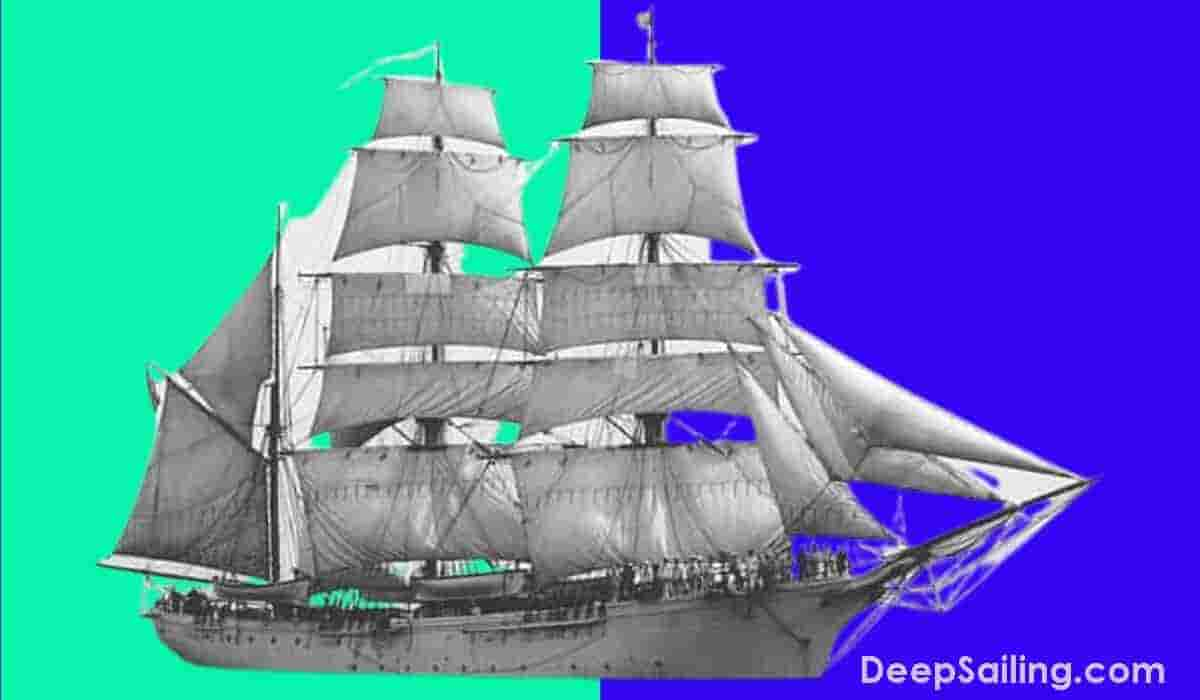
The barque, also referred to as "barc" or "bark", is a sailing ship first introduced in the 15th century (11) with 3 or more masts with square sails on all masts, except the aft or mizzen mast. It could carry approximately 500 tons and could hold a crew of 100 people.
Although they are quite similar, the barque should not be confused with the Schooner Bark which is a different vessel.
The Barque ship was commonly used by traders to carry extremely high volumes of cargo from Australia to Europe with cargo mainly consisting of Nitrates and Guano destined for the Western South American coast and they were popular in the period prior to the start of World War II.
7. The Clipper
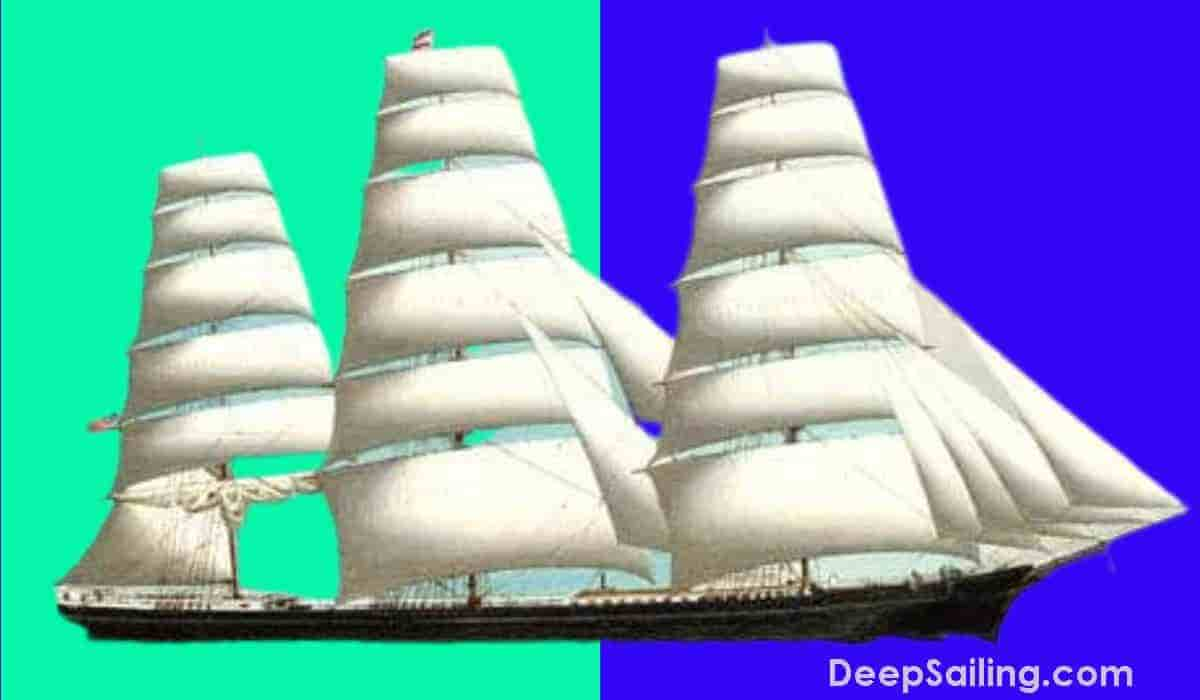
A clipper was a sailing vessel introduced in the mid-19th century that was mainly used as a merchant ship for transporting goods and it was designed for speed.
Clipper ships ranged in size from a few hundred tons to over 4000 tons (12) and they all had a narrow build, a protruding stern, 3 to 5 masts for speed, and a square rig.
They were most commonly used by British and American traders to ship goods from China to their countries and they were also used to ferry Gold and Tea back to Great Britain and the Americas.
Famous clipper ships are listed below.
- Cisne Branco: This is a steel-hulled built like the original clipper. It is used as a training vessel by the Brazilian navy to this day
- Race Horse: This clipper ship set the record of getting from New York to San Francisco in 109 days in 1850 which was a record at that time
- Marco Polo: This clipper vessel was the first boat of the time to make around trip between England & Australia in under 6 months in 1852
8. The Windjammer
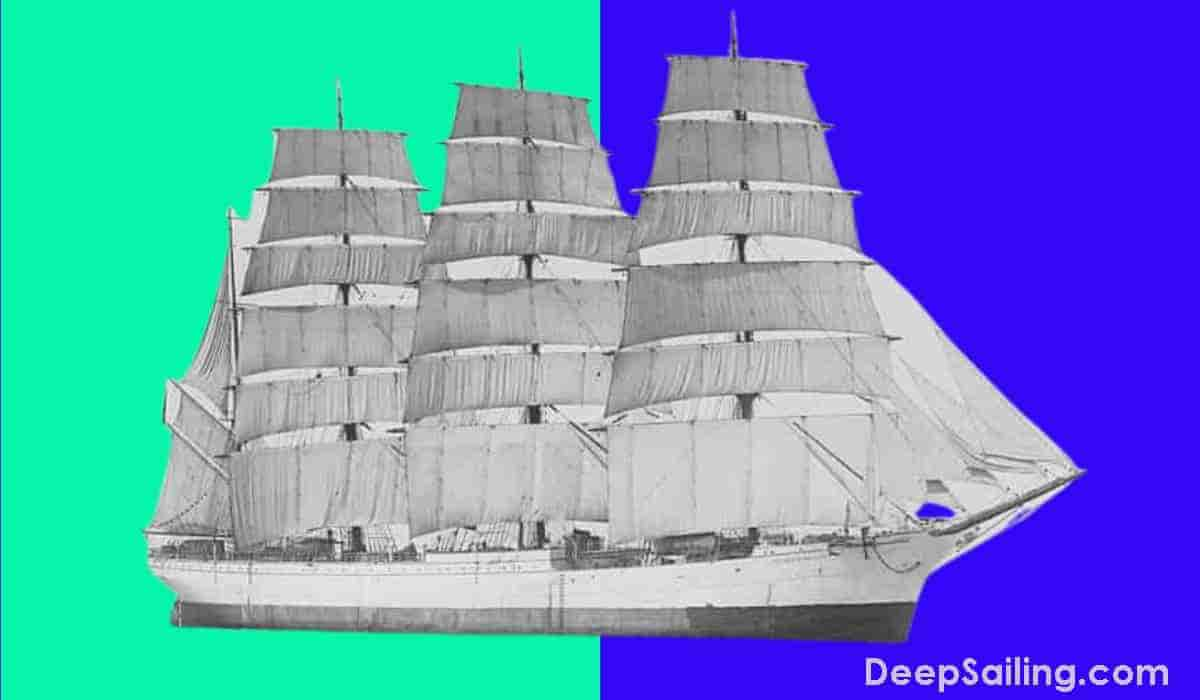
The Windjammer is a commercial sailing ship built in the 19th century with a capacity between 2,000 to 8,000 tons and the speed ranged from 14 to 21 knots (13).
It came with three to five square-rigged masts and it had a cost-effective extended hull that allowed for larger storage space.
It was a general-class merchant ship and was mainly used to transport bulky cargo and it ferried lumber, coal, and many other goods from one continent to another before evolving from carrying cargo to carrying passengers on cruises in later generations.
9. The Fluyt
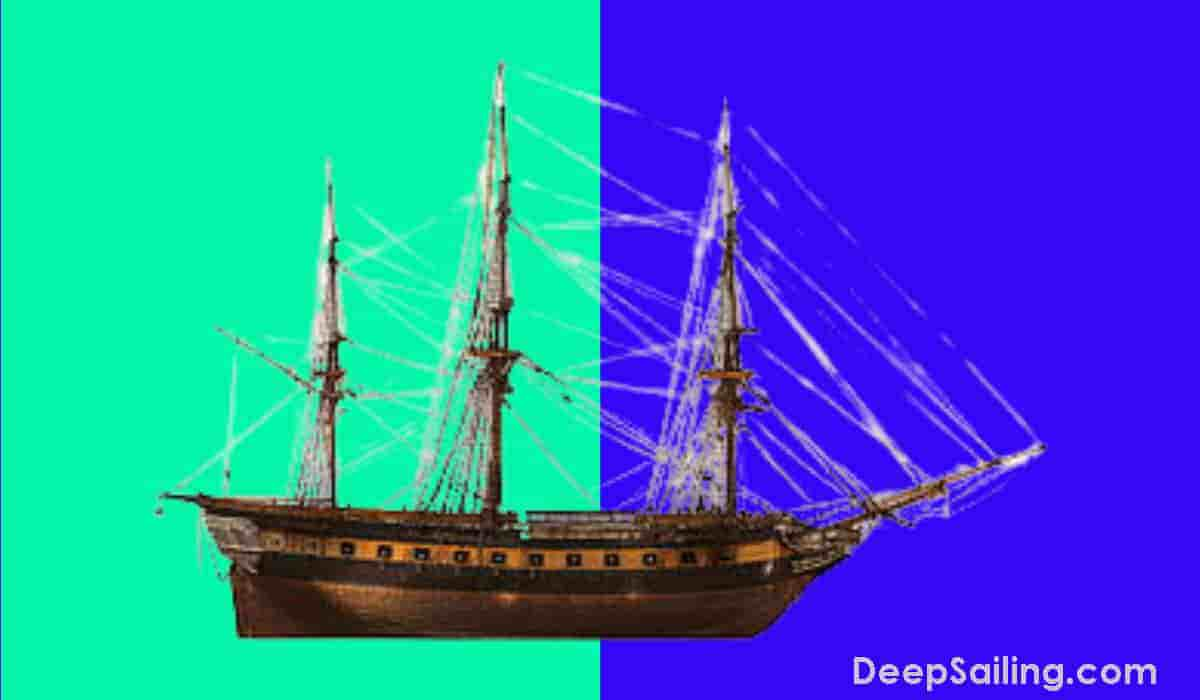
The Fluyt, also known as "fleut" or "fluit" is a sailing ship that originated in the 16th century in the Dutch Republic with a weight between 200 and 300 tons, approximately 80 feet (24 meters) in length, and a crew capacity of 12 - 15 people (14).
The Fluyt has three squared-rigged masts and was primarily used as a merchant ship to transport cargo.
It was lightly fortified, had a small stern and extended box-style structure, and was crafted using specialized tools to reduce the costs of production and make them affordable to merchants.
10. The Fully-Rigged Ship

A fully rigged ship, also referred to as a "full-rigged ship", is a sailing ship with three or more masts, with all of the masts being square-rigged and the rig, hull, mast, and yards made of iron, wood, or steel.
A full-rigged ship weighed an average 325 tons and could carry a crew of up to 36 people and these ships required a larger crew because of their fully rigged construction (15).
During the 18th century, a full-rigged ship was also referred to as a "frigate" and they were mainly used for patrolling and for attacking.
A full-rigged ship weighed an average 325 tons and could carry a crew of up to 36 people (16).
However, towards the end of the 19th century, these ships were stripped down so they could be handled by a smaller crew which helped in easier handling of the sails during the monsoon period when winds would change speed and direction without any warning.
This helped in easier handling of the sails during the monsoon period when winds would change speed and direction without any warning.
A fully rigged ship masts from stern to bow consists of: (17)
- Mainmast: This is the tallest mast on the ship
- Foremast: This is the second tallest mast on the ship
- Mizzenmast: This is the third tallest mast on the sailing vessel
- Jiggermast: If there is a 4th mast, it will be the jiggermast and will be the smallest mast on the ship
11. The Cutter
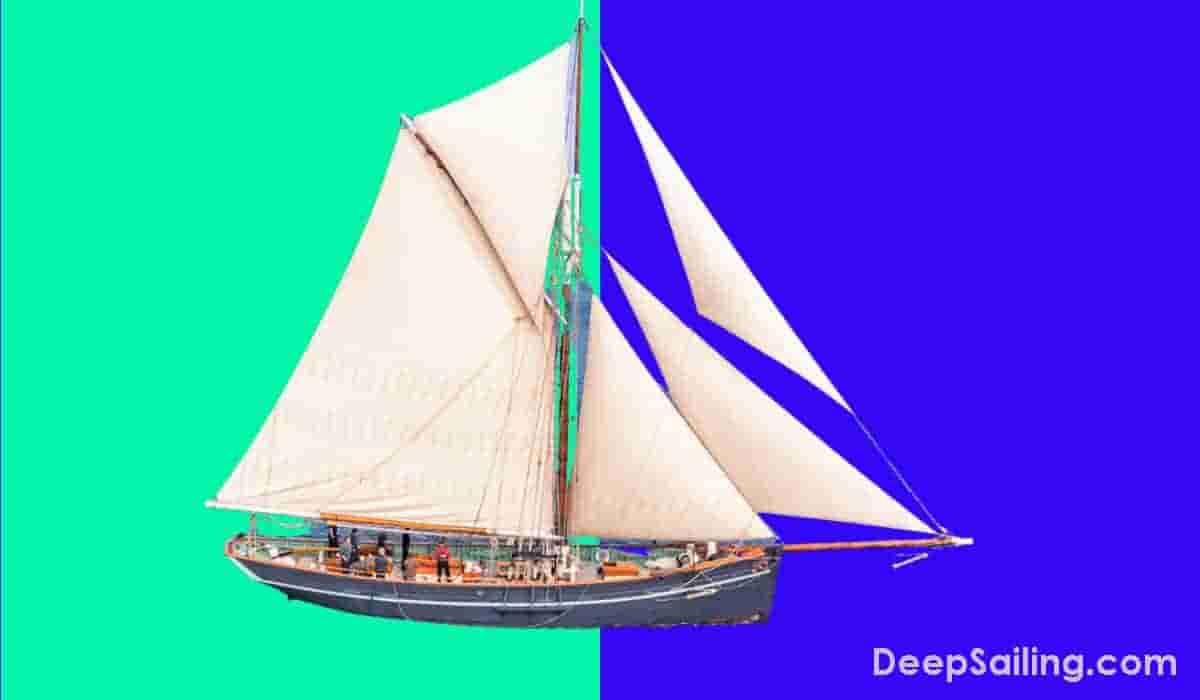
The cutter is a smaller sailing ship built in the early 18th century with a single mast rigged fore and aft and it varied in size from 20ft to 34 ft in length on average with a crew capacity of between 21 to 66 people (19).
A cutter sailing vessel features: (18)
- Narrow hull
- 1 mast
- 2 or more headsails
- Decked sailcraft
- Raking transom
- Vertical stem
- A gaff-rigged long bowsprit
This sailing ship was used for patrolling territorial waters and other enforcement activities during the 18th century and it was used to ferry soldiers and government officials because it was very fast and could outrun any enemy.
Modern-day cutters have a rugged appearance, are small and aptly fit into their intended purpose – speed and agility and the British Sailing Club still has open-oared cutters in their fleet of sailing ships.
12. The Yawl
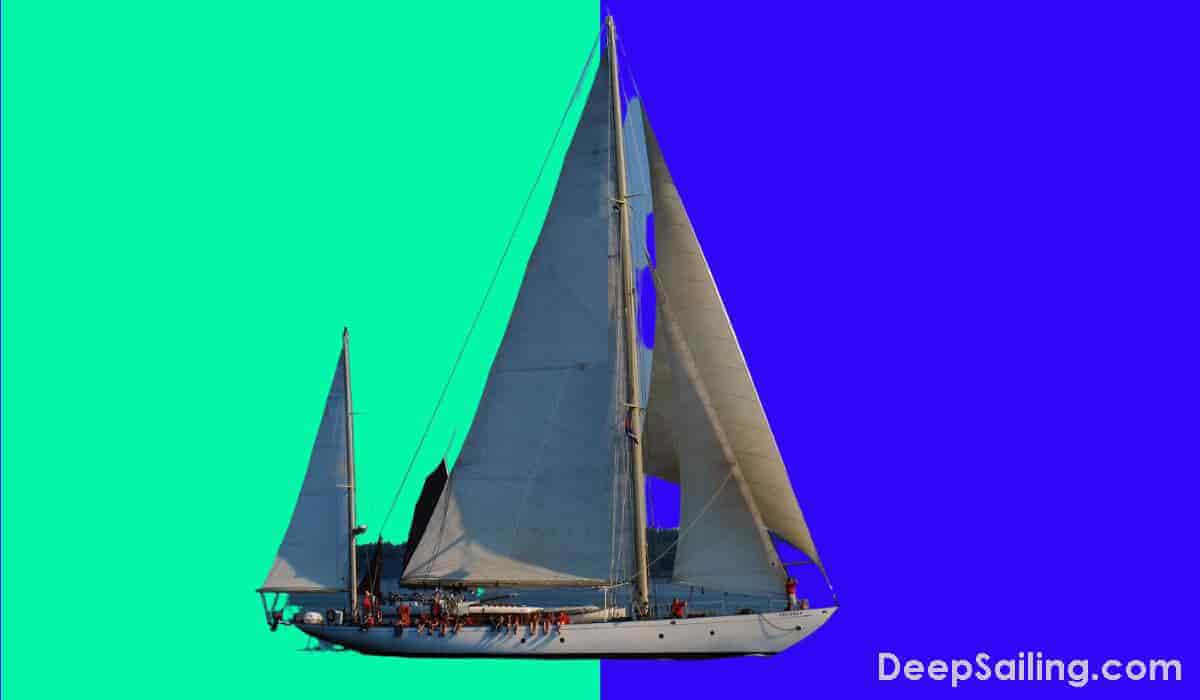
A Yawl is a sailing ship that was originally that was originally a dutch ship nicknamed "Dandy" or "Jol" in Dutch built in the 19th century with a speed range from 10-14 knots, an average crew size of 25 people and a ship size ranging from 30ft to 75ft in length with beam sizes ranging from 10ft to 12ft.
They bore two fully-equipped masts and a fore-and-aft sail, a smaller jigger-mast and a mizzen mast that leans towards the rudder post of the ship with the mizzen sail in this case purposely designed to aid in balancing and trimming the ship on rough waters.
One famous yawl sailing ship is the Islander which was a 34ft yawl that Harry Pidgeon sailed around the world on. He was the second person in 1918 to sail around the world at that time.
13. The Brig
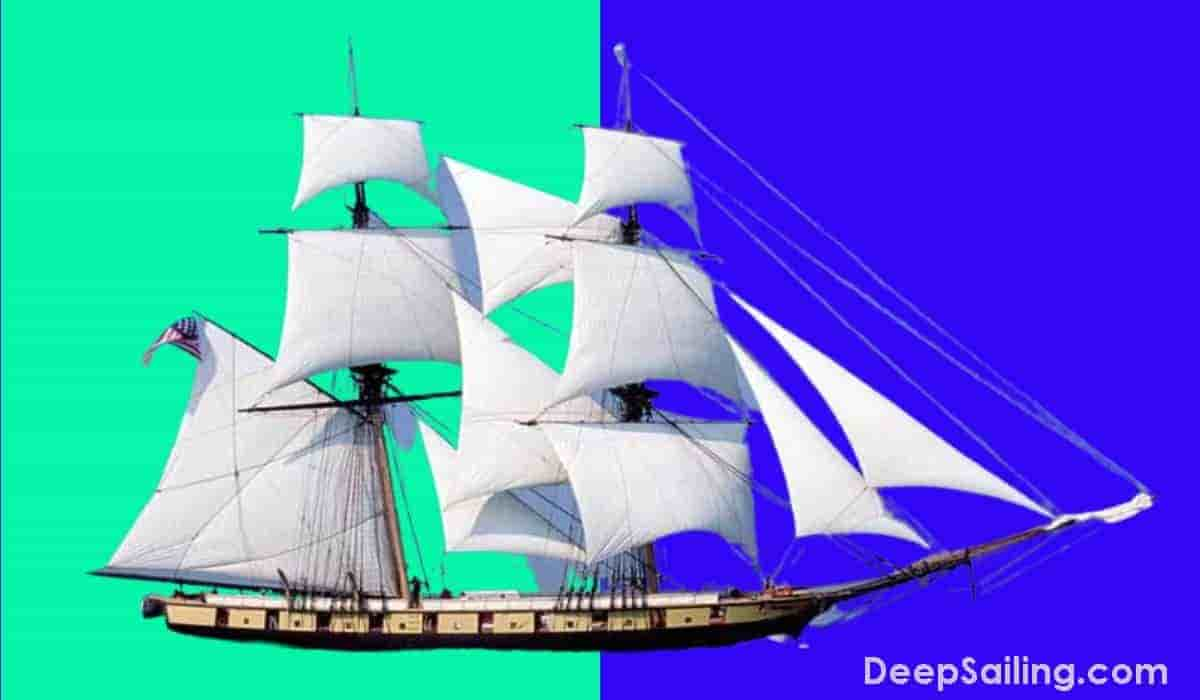
The brig is a two-masted sailing ship that was originally built in the 18th century with square rigging on both masts and sometimes had a spanker on the aft mast.
The length of a brig varied from 75ft to 165ft with tonnages up to 480 ith tonnages up to 480 and it needed a crew of 22 people (20).
The brig was used as a war vessel and a cargo ship for transporting goods and they were later used to ferry large cargo on the open seas since they could easily follow the direction of the prevailing winds.
It came with a berthing deck that had sleeping quarters for cabin crew and marine officials, storage areas, a sail bin, a wood-paneled stove room, guns, and carronades.
They would be brought into the harbor without using tugs and could maneuver well in small areas.
Famous brig ships are listed below.
- USS Argus: This was a United States Navy brig that fought in the First Barbary War, taking part in the blockage of Tripoli and the war of 1812
- USS Reprisal: This was the first ship of the United States Navy
- USS Somers: This was a brig in the United States Navy that became infamous for being the only US Navy ship to undergo a mutiny
14. The Ketch

A ketch is a two-masted sailboat that originated in the 17th century with most ketch ships ranging from 40ft to over 120ft in size and weighing between 100 and 250 tons. A ketch ship needed a smaller crew of only 4 people to operate (21).
The ketch looked just like the Yawl and as stated had two masts each having a fore-and-aft rig with the difference between the two being that the ketch had a mizzen mast placed on the taller mainmast but at a position in front of the rudder post. The mizzen in this case aided in maneuvering the vessel.
A ketch ship was used for:
- Cruising
- Cargo Transportation
- Fishing
- Racing
15. The Hulk
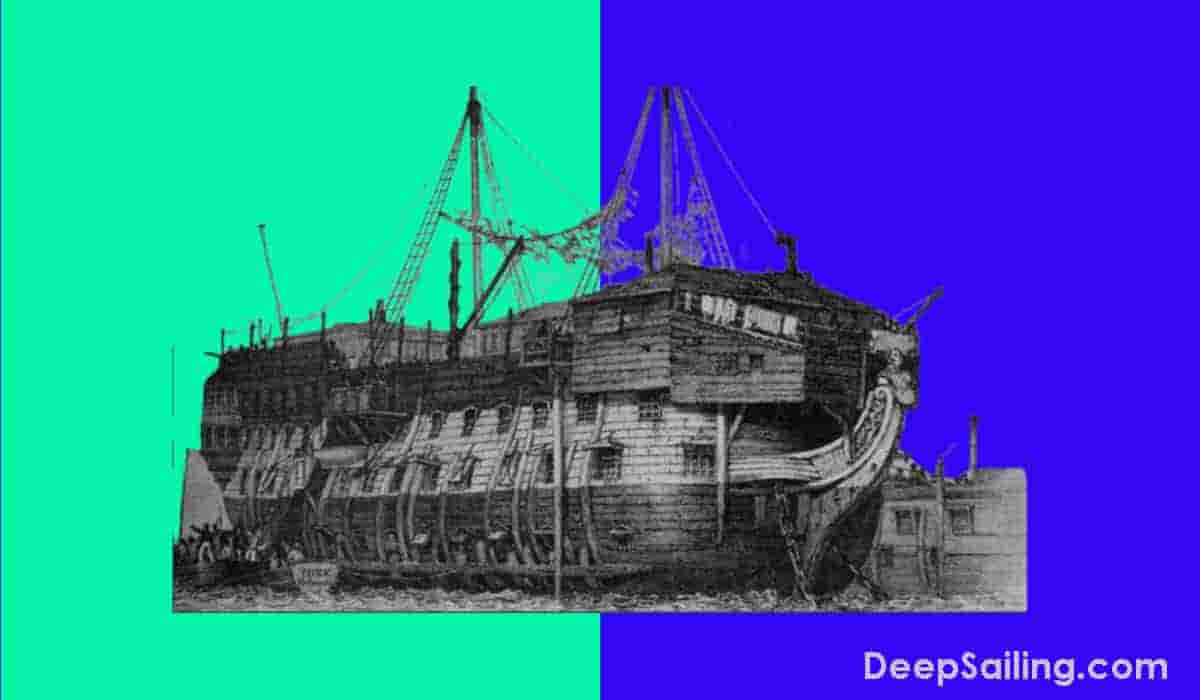
A hulk is an 18th-century ship that is a derivative of the Carrack with a weight of 400 tons that is afloat but incapable of going to sea. In maritime terms, the name "Hulk" was given to ships that were outdated, stripped down or unprofitable to run.
The bulk of the hulk fleet was comprised of abandoned ships, stripped down and therefore could not continue to ply across the Mediterranean Sea as cargo or transport ships.
They are stationary and kept for their buoyancy and were used as a prison, a place for gambling.
References
- Maritime Museum Of The Atlantic. "Sailing Ship Rigs".
- The New York Times. "America's Cup Held Here Since 1851", PDF.
- World History Encyclopedia. "Carrack Definition," Paragraph 3.
- Same As Reference 3
- Military History. "Carracks, Famous Carracks," Paragraph 9.
- "Aken, tjalken en kraken" by Hans Haalmeijer & Dirk Adrianus Vuik, Page 12.
- Google Books Ngram Viewer. "Brigantine".
- Gaspee Info. "Brigentines Described," Paragraph 3.
- Wikipedia. "Barquentine," Paragraph 1.
- "Ship: 5000 Years Of Maritime Adventure" by Brian Lavery, Page 137.
- Oxford English Dictionary (Online Edition). "Barque".
- University of Houston. "No. 338 Clipper Ship". Paragraph 2
- Marine Insights. "Windjammer Sailing Ships: From Past to Present". Paragraph 8
- History Today. "Dutch Shipbuilding in the Golden Age". Volume 34, No. 1
- "The Story Of The Sea, Volume 1" by Arthur Quiller-Couch, Page 20.
- Whaling Museum. "Rigs Of Vessel, Ship," Paragraph 1.
- "A Dictionary of Sea Terms" by Anstead, A, Page 96.
- Britannia. "Cutter, Sailing Craft". Paragraph 1.
- "The Boats Of Men Of War" by William May & Simon Stephens
- Texas Navy Association. "Glossary Of Nautical Terms". Page 1
- National Museum Of American History. "Ship Model, Ketch". Paragraph 1